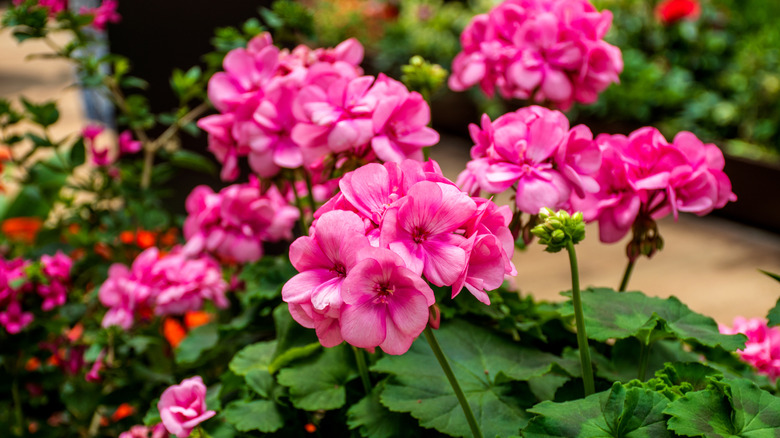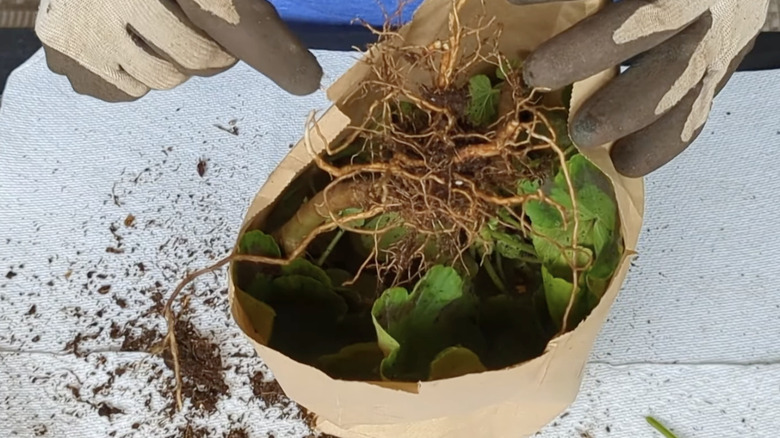How To Overwinter Dormant Geraniums For Stunning Blooms Next Season
There are avoidable mistakes that are killing your geraniums in the garden, and leaving them to fend for themselves in the freezing winter temperatures is one of them. If you want to help your garden geraniums thrive next spring, now is the time to plan your overwintering process, which is simply a means of protecting plants through the winter. There are a few methods for overwintering geraniums, one of which is dormant storage, or storing bare-root plants. This method, which entails digging it up from the ground (or pot) and storing it indoors, is a relatively hands-off approach and is good for someone who doesn't have much time to dedicate to the process.
The geraniaceae plant family can be a bit confusing, as it has both the genus Geranium (whose plants are commonly called cranesbills) and the genus Pelargonium (whose plants are commonly called geraniums). The more familiar among gardeners and popularly sold at stores in springtime are actually Pelargonium. But hey, you say geranium, we say Pelargonium. Either way, they are tender perennials that are not very cold or frost tolerant, usually thriving best in USDA zones 8 to 10. That being the case, many people in cold climates will treat them as annuals, letting them die at the end of the season. But the good news for geranium lovers is that you don't have to. With a little extra care and support, you can overwinter a dormant geranium and help it outlast the frigid temperatures. Come springtime, you'll be able to grow happy and healthy geraniums in containers with these must-know tips.
Use the bare-root storage method to overwinter dormant geraniums
The first thing to know about overwintering is that you'll need to plan ahead of the weather — a great tip for growing a healthy garden of any kind — as the overwintering process should start prior to the first frost of the season. It's important to start early so the plant isn't already damaged before you begin. Assuming that hasn't happened yet, you'll want to start by digging up the geranium and lightly shaking off any excess soil. Using the bare-root storage method works great for geraniums because, interestingly, they can survive the season without most of their soil. Once you have it cleaned up, decide how you're going to store it for the winter.
You can place the geranium upside down in a brown paper bag, or hang it upside down from the rafters. Choosing a cool, dry space, like a basement or enclosed porch are good options. Ideally, you want the temperature of the storage space to be between 45 and 55 degrees Fahrenheit. Water the roots two or three times throughout the winter so they do not get too dry. You can do this by soaking them in water for 1 to 2 hours before returning the geranium to the paper bag or hanging it back up. In March or April, clean up any dried leaves or stems, pot the geranium, water it well, and let it sit in a sunny window where you'll see it start to come back to life.

